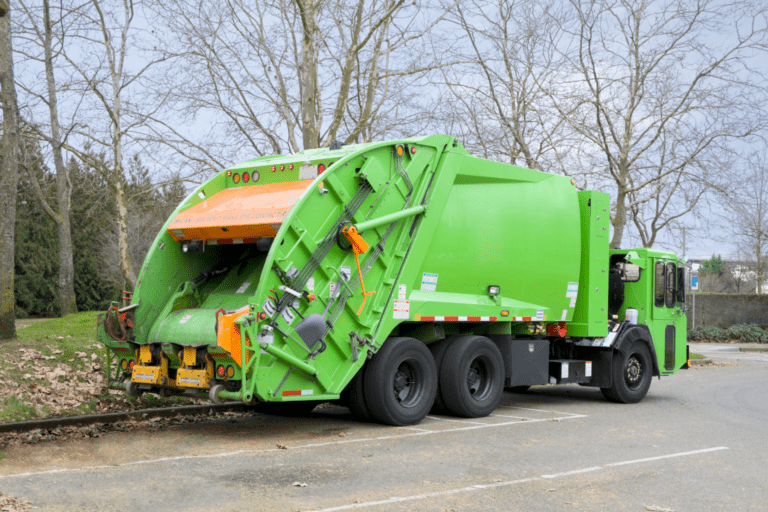We know that DOT compliance in the USA can be daunting. Though Federal regulations are in place to make sure fleet managers and drivers are operating safe vehicles on America’s roadways, sifting through the information on the Federal Motor Carrier Safety Association (FMCSA) website can be a little confusing.
Here, we’re hoping to help break down one of the crucial elements of the DOT Compliance: the DVIR, or Driver Vehicle Inspection Report. What is DVIR? What does it entail? What are the record-keeping requirements? Why is it important to stay compliant?:
WHY COMPLY?
AVOID FINES
FMCSA has a complicated but thorough fine schedule that penalizes motor carriers that fail to ensure the safety of all vehicles on the road. It goes beyond fees, though: serious violations can result in an Out-of-Service order, which will remove the driver or vehicle from operation until the issues are fixed. And they’re not kidding around: in 2017 alone, MCSAP inspectors performed well over 3,000,000 roadside inspections on commercial motor vehicles or drivers in the United States.
PRIORITIZE SAFETY
It’s not just a matter of avoiding fines and keeping vehicles on the road. Maintaining DOT compliance helps your fleet to maintain standards of safety that protect not only your business, but everyone on the road. According to the latest information available from FMSCA, more than 4,000 large trucks and buses were involved in fatal crashes in 2016, causing around 119,000 injuries in one year alone. Completing DVIR’s isn’t just paperwork. It’s a way of ensuring that vehicles are safe, inspected, and ready to be on the road.
INSPECTIONS: COVER ALL YOUR BASES

Section 396.11 of Federal Regulations covers Inspection, Repair, and Maintenance for Motor Carriers. It’s not just fleet managers who need to be knowledgeable on the rules: all drivers, agents, representatives, and employees in your fleet need to stay up-to-date on what’s required in an inspection. Make sure you drivers and operators know that these are the minimum requirements that drivers need to inspect and report on in their DVIR:
-
Service brakes, including trailer brake connections
-
Parking brake
-
Steering mechanism
-
Lighting devices and reflectors
-
Tires
-
Horn
-
Windshield wipers
-
Rear vision mirrors
-
Coupling devices
-
Wheels and rims
-
Emergency equipment.
In most cases, this pre- and post-trip inspection won’t take too long. It’s a great way to get drivers and operators ready and primed for a long trip while simultaneously fulfilling DOT regulations. In addition to these basics, there are a couple other areas where your team needs to practice vigilance. For example:
-
Make a record every 90 days (at least) that a driver has checked push out windows, emergency doors, and emergency door marking lights to make sure they’re up to par.
-
Every vehicle needs to be properly lubricated and free of oil and grease leaks.
-
Motor carriers need to retain a record of every vehicle they use which includes the make, year, serial number, and tire size.
-
Get a full inspection every 12 months.
TIP: USING INTERMODAL EQUIPMENT?
If your fleet uses intermodal equipment, this necessitates an extra step in the inspection process. When returning intermodal equipment to the provider, your driver needs to prepare a report detailing the following inspection items:
-
Brakes
-
Lighting devices, lamps, markers, and conspicuity marking material
-
Wheels, rims, lugs, tires
-
Air line connections, hoses, and couplers
-
King pin upper coupling device
-
Rails or support frames
-
Tie down bolsters
-
Locking pins, clevises, clamps, or hooks
-
Sliders or sliding frame lock
COMPLETE YOUR DVIR DAILY

It’s not enough to know exactly what needs inspecting. Your team of drivers needs to keep up on regulations by filling out a DVIR every single day. Here’s a simple break down of the daily process:
BEFORE THE TRIP
Before your drivers take vehicles out on the road, they’re required to review to do a pre-trip inspection of all the major safety features of the vehicle as listed above. If there were any defects noted for the vehicle in the previous DVIR, they cannot take the vehicle out on the road until the defects are fixed. If the previously-noted defects have been fixed since the previous report, the driver signs off to indicate that the defects have been fixed and the vehicle is safe to drive.
AFTER THE TRIP
At the end of the trip, drivers have to do a thorough check of the vehicle and complete a DVIR. If there were two drivers in the vehicle, only one needs to complete the DVIR. Here’s what it needs to include:
-
Name, date, time
-
All the required inspection areas as listed above (service brakes, tires, horns, etc.)
-
Clear identification of the vehicle
-
The driver’s signature
-
A list of any damages or defects that have to be fixed before the vehicle is taken out again
REPORTING & RETAINING DVIR’S
Drivers should submit their completed DVIR’s, complete with record of any defects or deficiencies, at the end of the work day. This is key because it provides valuable information about what needs to be repaired before the vehicle goes back out (and helps fleet managers stay in compliance). Retain copies of the DVIR’s, and any record of defects and repairs, for three months afterwards.
WHAT’S THE “NO DEFECT” DVIR RULE?
In 2014, FMCSA rescinded the requirement to keep records of DVIR’s if no defects or deficiencies are found at the end of the day. This was an attempt to decrease the amount of paperwork required of truck drivers. However, all motor carriers need to keep records of defects or deficiencies found for at least three months and passenger-carrying CMV’s still have to submit DVIR’s, no matter what. Depending on the company, some fleet managers may have policies on submitting DVIR’s at the end of each day even if no defects are found.
TIP: ISSUES ON THE ROAD?
If a driver discovers issues on the road, they may drive to the nearest possible location for repairs—but only if it’s more dangerous to the public to stay put than to get back on the road for assistance.
PAPER VS. ELECTRONIC DVIR’S
We understand that it can be confusing to stay compliant with DOT regulations, especially if your team is taking on the additional burden of juggling paperwork. That’s where Electronic DVIR’s can come in handy: by keeping information standardized between drivers and outlining exactly what’s required for your fleet, you can take some of the pressure and confusion off drivers. This is also a great way to stay up-to-date on your annual inspections and 90-day required inspections.
At Whip Around, our goal is to provide simple answers to your questions: What is DVIR? How do you stay DOT Compliant? If you want to learn more about DOT Compliance, book a demo to get started, or contact us today.









